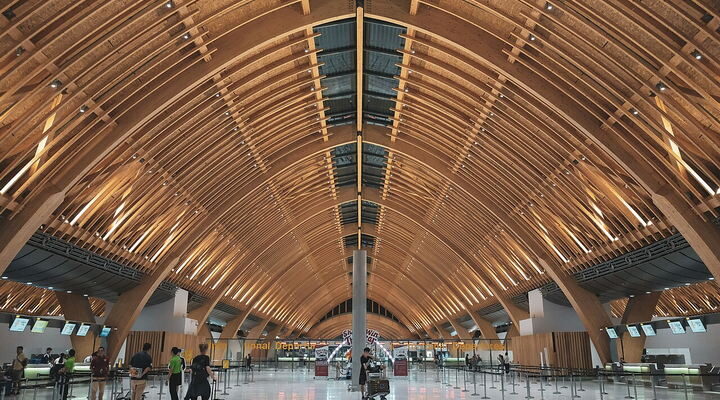In the realm of aviation, airport designs are not just about grandeur and aesthetics; they embody the essence of functionality, technological advancement, and cultural representation. Airports, these colossal gateways that connect different parts of the globe, have evolved into much more than mere transit points. They are now destinations in their own right, offering glimpses into architectural innovation and technological feats. Airport architecture has taken a significant leap forward, transforming travel experiences and setting new standards in design.
In today’s dynamic world, where travel convenience and efficiency are paramount, airports have become a focal point for cutting-edge design. These structures, sprawling over vast landscapes, are no longer just about getting from point A to point B; they are about the experience in between. They reflect the fusion of global cultures, the pursuit of sustainable practices, and the seamless integration of advanced technology. This evolution is not just about physical structures; it’s a reflection of our changing society, our growing demands, and our relentless pursuit of excellence.
As we explore the most innovative airport designs across the world, we see a pattern of change – a shift towards smart airport features and eco-friendly solutions. These airports not only cater to the functional aspect of handling millions of passengers but also pay homage to local art and culture, embedding the essence of their locale into modern architecture. From utilizing natural light to minimizing environmental impact, these designs are a testament to human ingenuity and vision.
Each airport on our list represents a unique blend of form and function, symbolizing the intersection of global connectivity and local identity. They stand as beacons of progress, showcasing how design can enhance user experience, operational efficiency, and even airport security measures.
10 – Shenzhen Bao’an International Airport
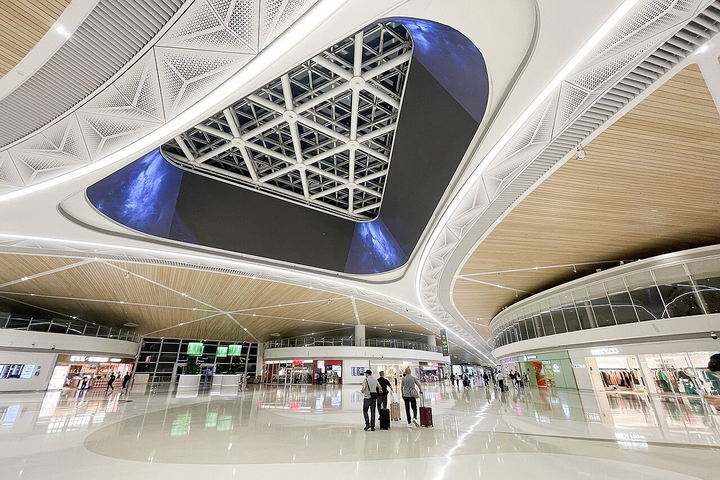
In the bustling city of Shenzhen, Bao’an International Airport stands as a beacon of modernity. This airport isn’t just about getting from point A to point B; it’s a testament to architectural brilliance and technological innovation. With its futuristic design, the airport mirrors the city’s tech-driven spirit. Imagine walking through a terminal where the architecture feels like a leap into the future – that’s Bao’an for you. Its expansive spaces and the efficient use of natural light make it more than just an airport; it’s an experience.
09 – Istanbul International Airport
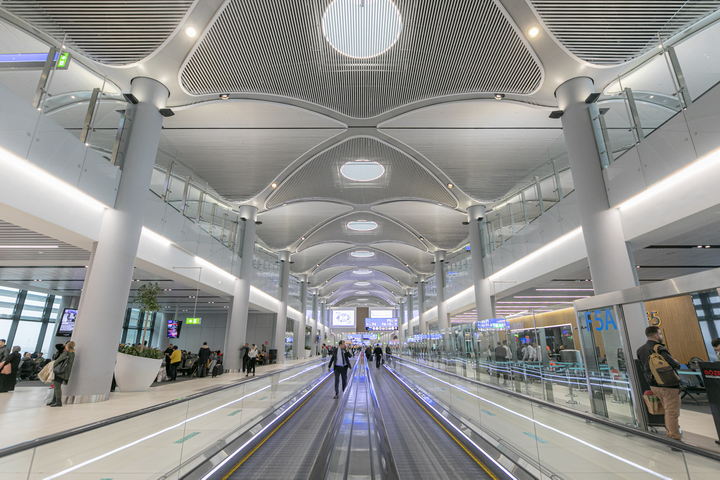
As a bridge between continents, Istanbul’s new international airport captures the essence of the city’s rich history while looking firmly towards the future. The vaulted ceilings and grandeur of its design reflect the city’s storied past, yet the airport is packed with modern amenities. This hub isn’t just about size; it’s about making a statement. It’s where traditional charm meets contemporary elegance, creating an unforgettable gateway to both Asia and Europe.
08 – Munich Airport
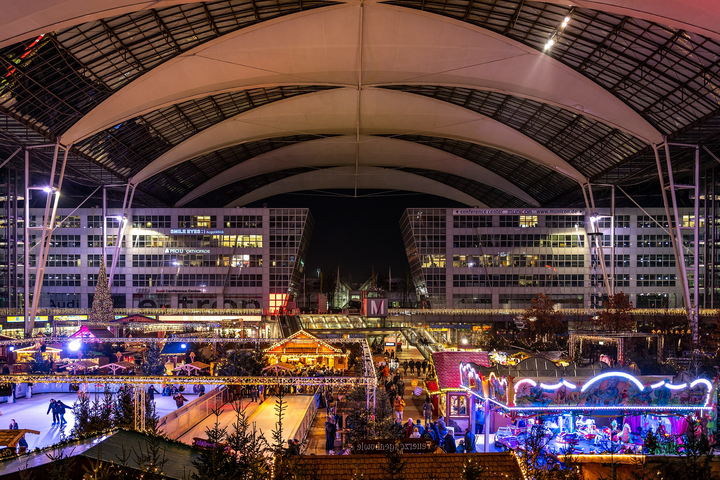
Germany’s Munich Airport is a chameleon of sorts, changing its colors with the seasons. This isn’t just an airport; it’s a cultural hub. Picture this: one day you’re surfing in a man-made wave pool, and the next, you’re sipping Oktoberfest beers or shopping for Christmas gifts, all within the airport! Munich Airport blurs the line between a travel hub and a leisure destination. It’s not just about travel; it’s a place where joyful experiences and seasonal festivities come alive.
07 – Kuala Lumpur International Airport
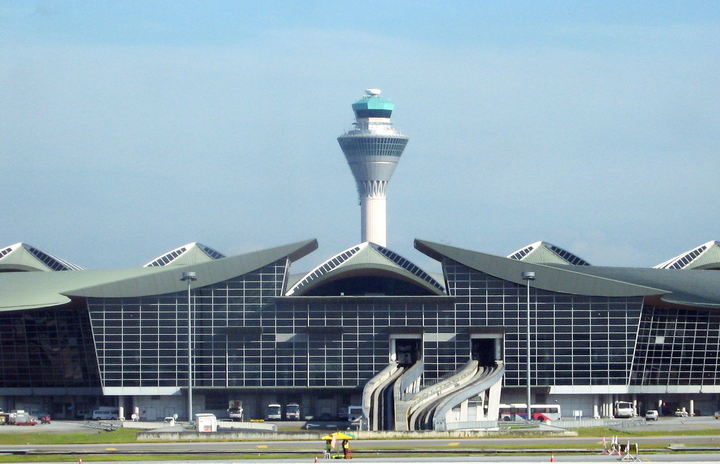
In Kuala Lumpur, their international airport is more than a transit point; it’s a lush retreat. Imagine stepping into an airport and finding yourself surrounded by a rainforest. Yes, a rainforest inside an airport! It’s like walking into a slice of Malaysian paradise, blending the hustle of travel with the tranquility of nature. This airport redefines the passenger experience by merging modern architecture with natural elements, creating a serene yet vibrant travel environment.
06 – Hamad International Airport
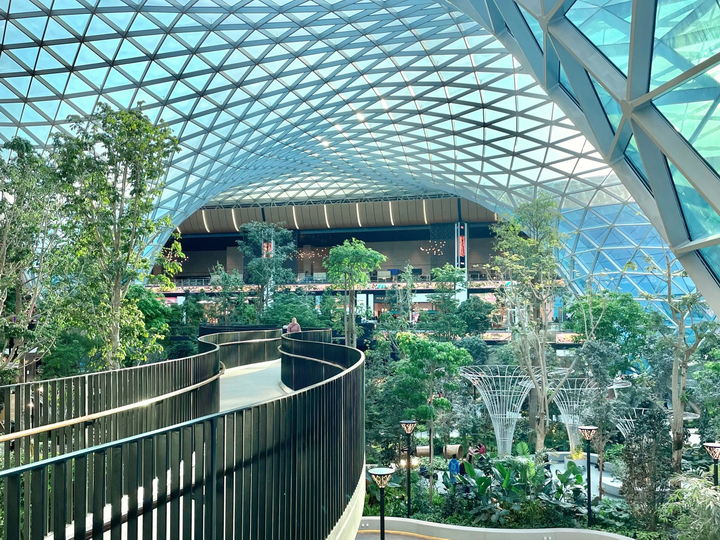
Doha’s Hamad International Airport is where art meets function. This airport is a fusion of luxury, sophistication, and cutting-edge technology. It’s not just about facilitating travel; it’s about creating an aura of opulence. With its expansive lounges and contemporary art installations, Hamad International is a destination in itself. It symbolizes Qatar’s progressive growth, incorporating cultural heritage into a futuristic design that leaves travelers in awe.
05 – Chhatrapati Shivaji International Airport
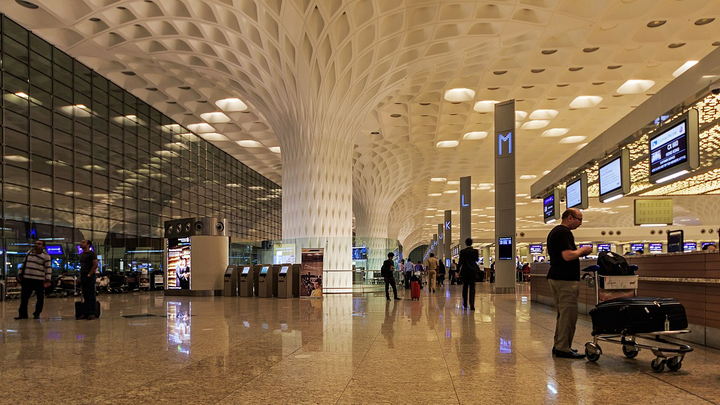
Mumbai’s Chhatrapati Shivaji International Airport is a marvelous blend of cultural heritage and modern design. It’s not just an airport; it’s a canvas displaying India’s rich tapestry. The terminal’s intricate design, inspired by peacock feathers and traditional Indian pavilions, transports you to a world of splendor. This airport isn’t just about travel; it’s a celebration of Indian artistry, a space where each corner tells a story of heritage and craftsmanship.
04 – Mactan Cebu International Airport
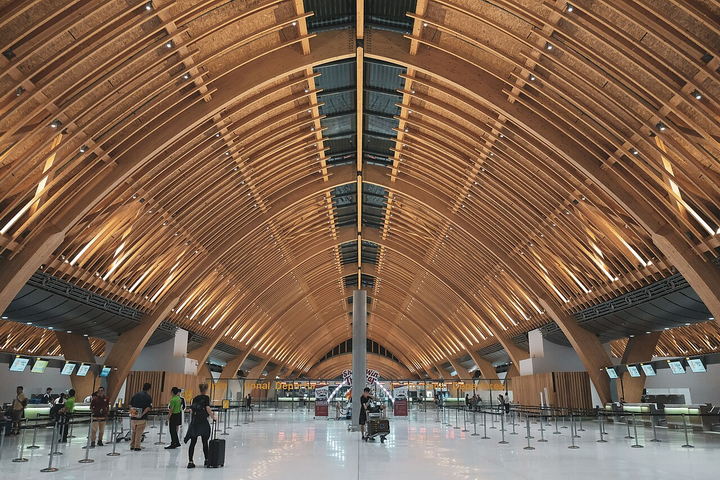
The Philippines’ Mactan Cebu International Airport is an epitome of island charm. Picture this: an airport that feels like a beach resort. With its high-pitched roofs and tropical design, it’s a gateway to the archipelago’s natural beauty. It’s a refreshing take on airport design, blending the functionality of a travel hub with the laid-back vibe of a seaside getaway. This airport transforms the usual hustle of travel into a relaxing prelude to the islands’ serene beaches.
03 – Denver International Airport
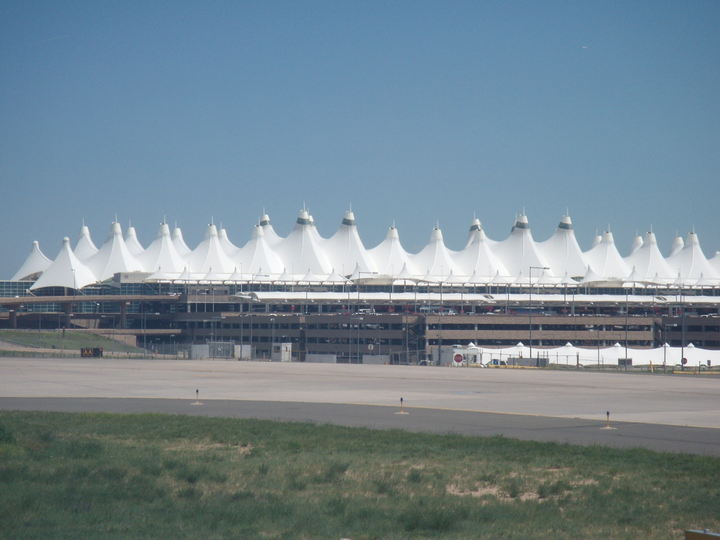
Denver International Airport is an architectural marvel, a landmark that’s become synonymous with the city itself. Its tensile roof canopy echoes the snow-capped Rocky Mountains, merging the airport with Colorado’s iconic landscape. But it’s not just about aesthetics; the design is a smart choice for energy efficiency, capitalizing on Denver’s abundant sunshine. This airport is a gateway to the American West, a junction where innovative design meets environmental consciousness.
02 – Beijing Daxing International Airport
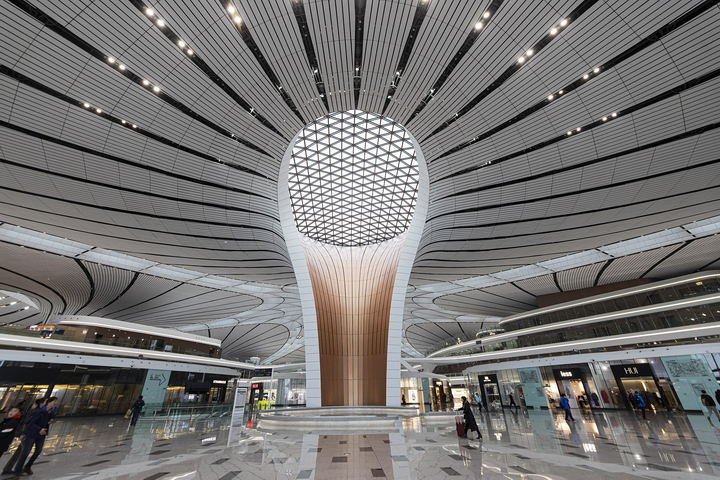
China’s Beijing Daxing International Airport is a testament to what’s possible when ambition meets innovation. The starfish-shaped airport is one of the largest in the world, a hub designed for the future. It’s not just its size that’s impressive; it’s the integration of sustainability and efficiency. From solar power to rainwater harvesting, Beijing Daxing is an example of how airports can lead in eco-friendly design while handling immense passenger traffic.
01 – Jewel Changi Airport
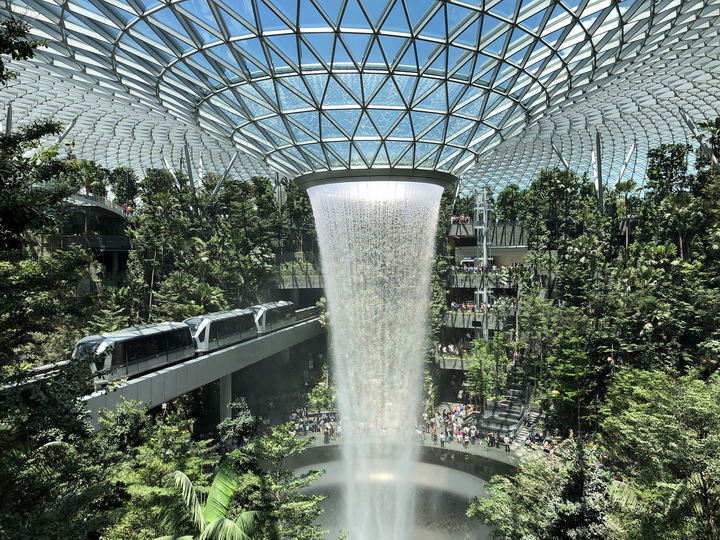
At the pinnacle of airport innovation is Singapore’s Jewel Changi Airport. It’s not just an airport; it’s a lifestyle destination. The Rain Vortex, the world’s tallest indoor waterfall, is surrounded by a lush, verdant oasis. This airport redefines the layover experience – you can wander in a botanical garden, catch a movie, or simply bask in the tranquility of nature. Jewel Changi isn’t just about travel; it’s about creating moments of joy and wonder amidst the usual chaos of airports.
The Role of Technology in Shaping Airport Design
In the ever-evolving landscape of airport design, technology stands as a pivotal force driving innovation. The integration of advanced technological features in airports has radically transformed the traveler’s journey, making it more efficient, secure, and enjoyable. Let’s delve into the key technological advancements that are redefining airport architecture:
- Automation and Self-Service Solutions: Airports are increasingly adopting automated systems, including self-check-in kiosks and baggage drop areas. This shift not only streamlines the process but also enhances passenger flow and reduces waiting times.
- Biometric Verification Systems: Implementing biometric technology, such as facial recognition, has revolutionized airport security. This technology speeds up the identification process while maintaining high security standards.
- Smart Terminal Designs: These designs focus on optimizing space and passenger experience. Smart terminals use sensors and data analytics to manage crowd flow, making the journey smoother for travelers.
- Sustainable and Eco-friendly Innovations: Airports are increasingly focusing on sustainability. This includes using renewable energy sources, green building materials, and designs that reduce carbon footprint.
- Digital Information and Navigation Systems: Enhanced digital signage and navigation apps help passengers navigate complex airport layouts with ease, improving the overall travel experience.
- High-Speed Connectivity: With the implementation of 5G networks and robust Wi-Fi systems, airports are becoming hubs of high-speed digital connectivity.
- Interactive and Immersive Experiences: Many airports now feature interactive displays and virtual reality experiences, providing entertainment and engagement opportunities for passengers.
- Advanced Baggage Handling Systems: Innovative luggage systems use RFID technology and automation to handle and track baggage more efficiently, significantly reducing the chances of lost luggage.
- Energy-Efficient Lighting and Climate Control: Smart lighting and climate systems not only reduce energy consumption but also create a more comfortable environment for passengers.
- Noise Reduction Technologies: Acoustic design and noise control technologies are employed to create a more peaceful and less stressful airport environment.
By harnessing these technologies, airports are not just enhancing operational efficiency but are also elevating the passenger experience to new heights. As we look towards the future, it’s evident that technology will continue to play a crucial role in shaping airport designs, making air travel more seamless and enjoyable than ever before.
Reflecting on the Future Through Innovative Airport Designs
As we conclude our exploration of the most innovative airport designs around the globe, it’s clear that these architectural marvels are more than just transit hubs. They are symbols of technological prowess, cultural significance, and a testament to human creativity. These airports are not just structures but experiences, showcasing the potential of combining functional design with aesthetic beauty.
Innovative airport designs reflect a broader vision, one that harmonizes advanced technology, sustainable practices, and cultural elements. They are landmarks of progress, embodying the spirit of their respective locales while pushing the boundaries of what’s possible in architecture and engineering. The airports we’ve explored set a precedent for future developments, highlighting the importance of user experience, environmental responsibility, and technological integration.
Looking ahead, it’s exciting to think about what the future holds for airport design. With advancements in technology and a growing emphasis on sustainability, the next generation of airports will likely be even more astounding. They will continue to be spaces where efficiency meets elegance, where global travelers find comfort and convenience, and where the journey becomes as memorable as the destination.
In essence, the most innovative airport designs of today are not just about where we’re going. They’re about how we’re getting there. They are a blend of practicality and wonder, guiding us toward a future where travel is more than just movement – it’s an experience.


